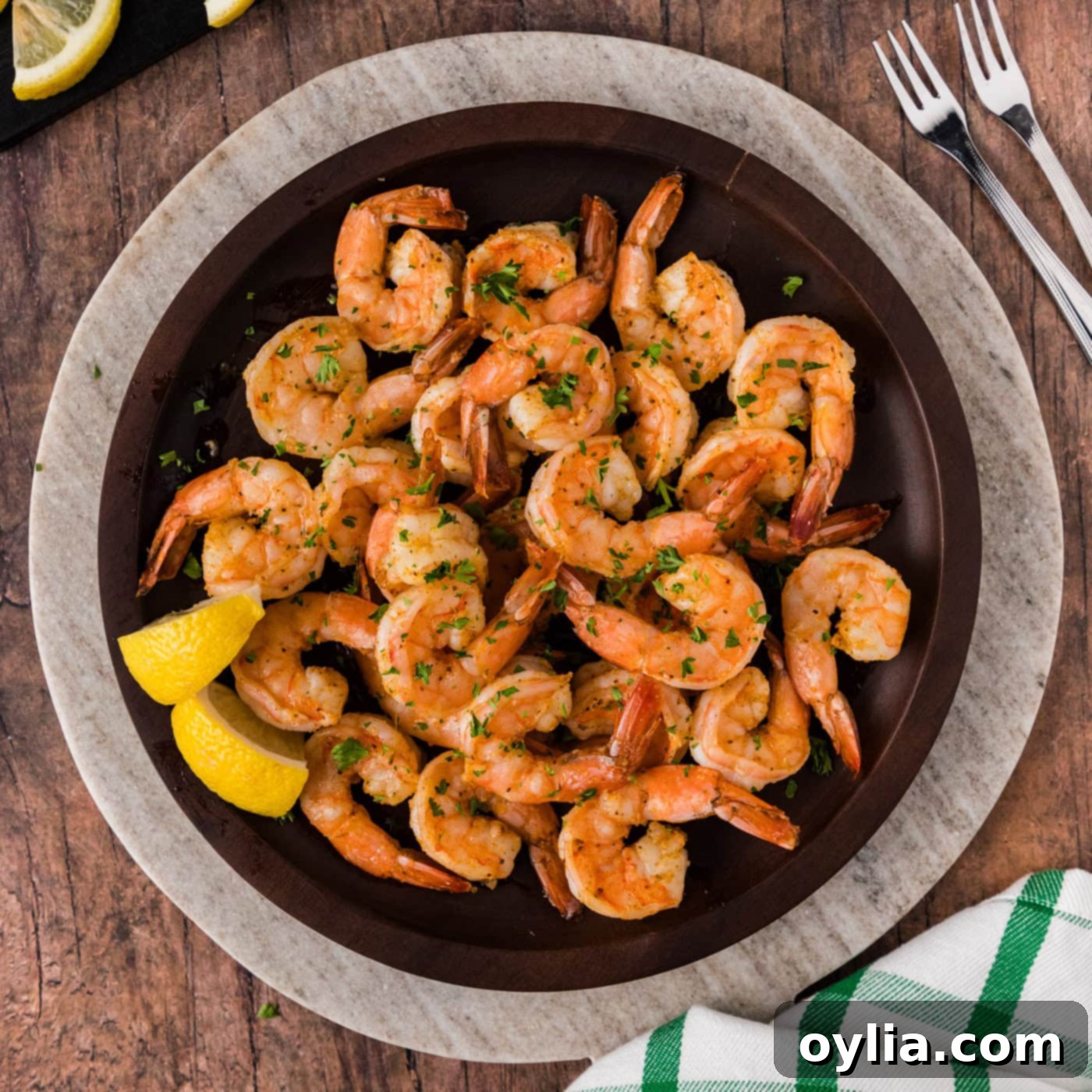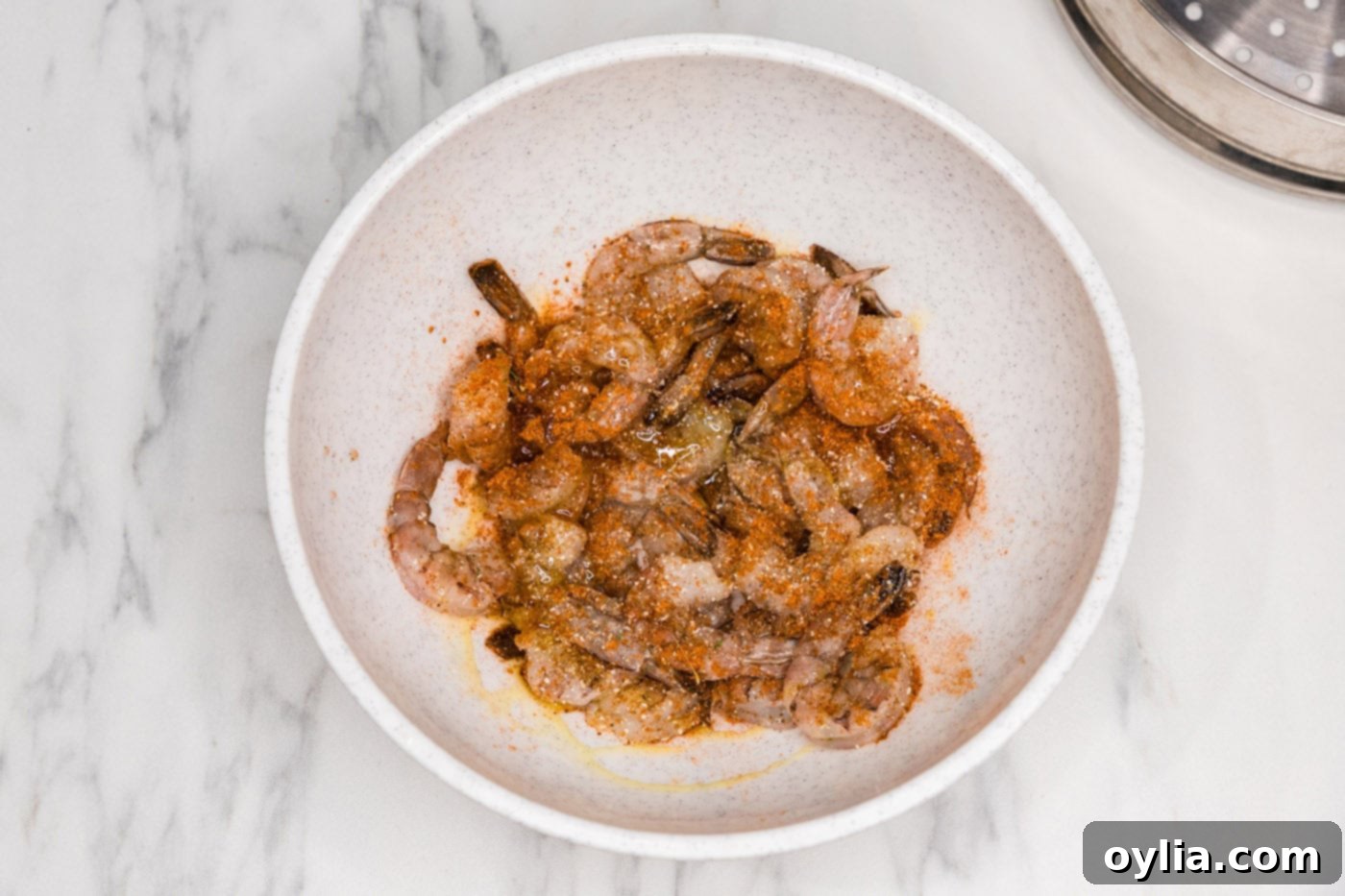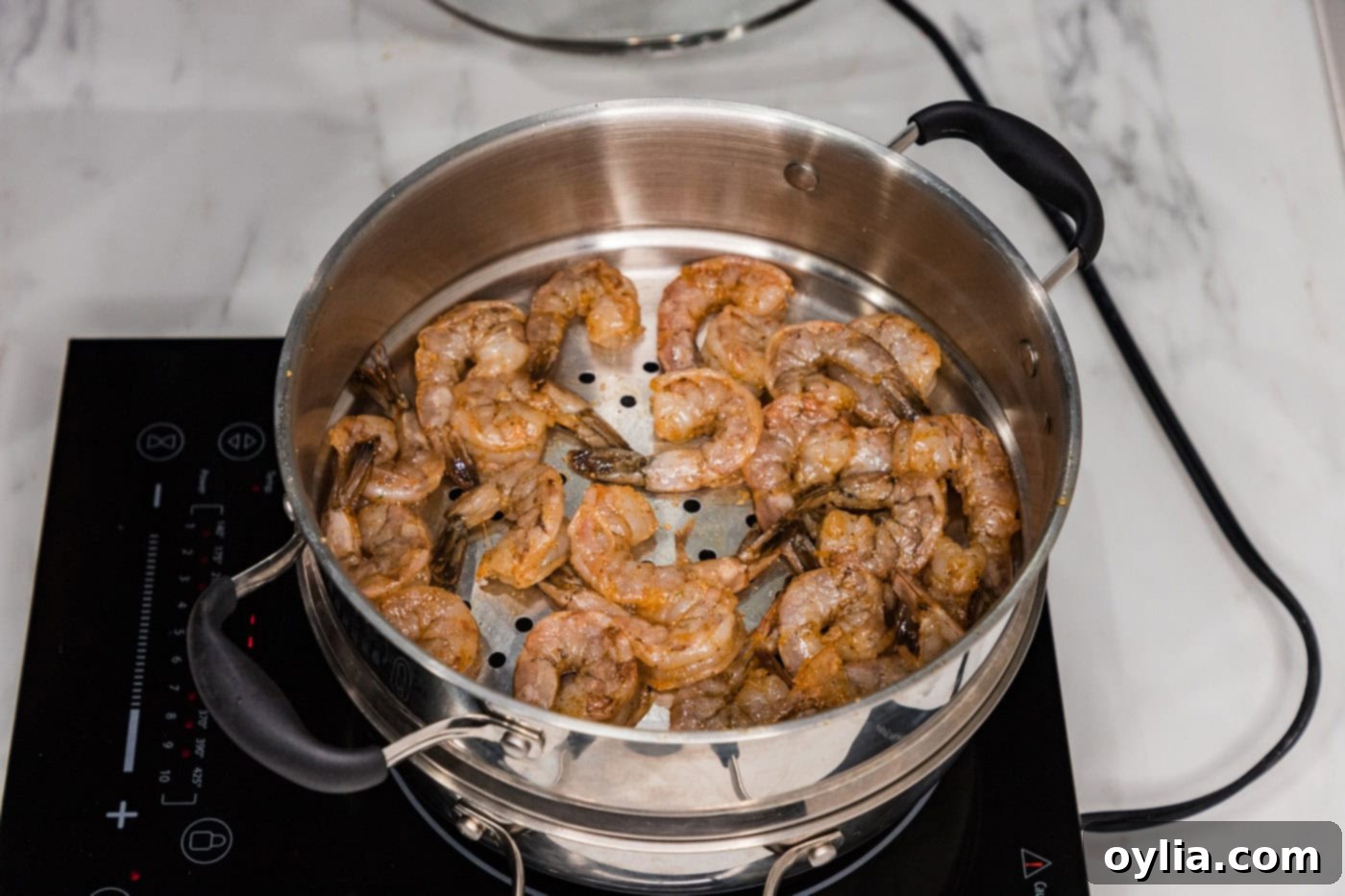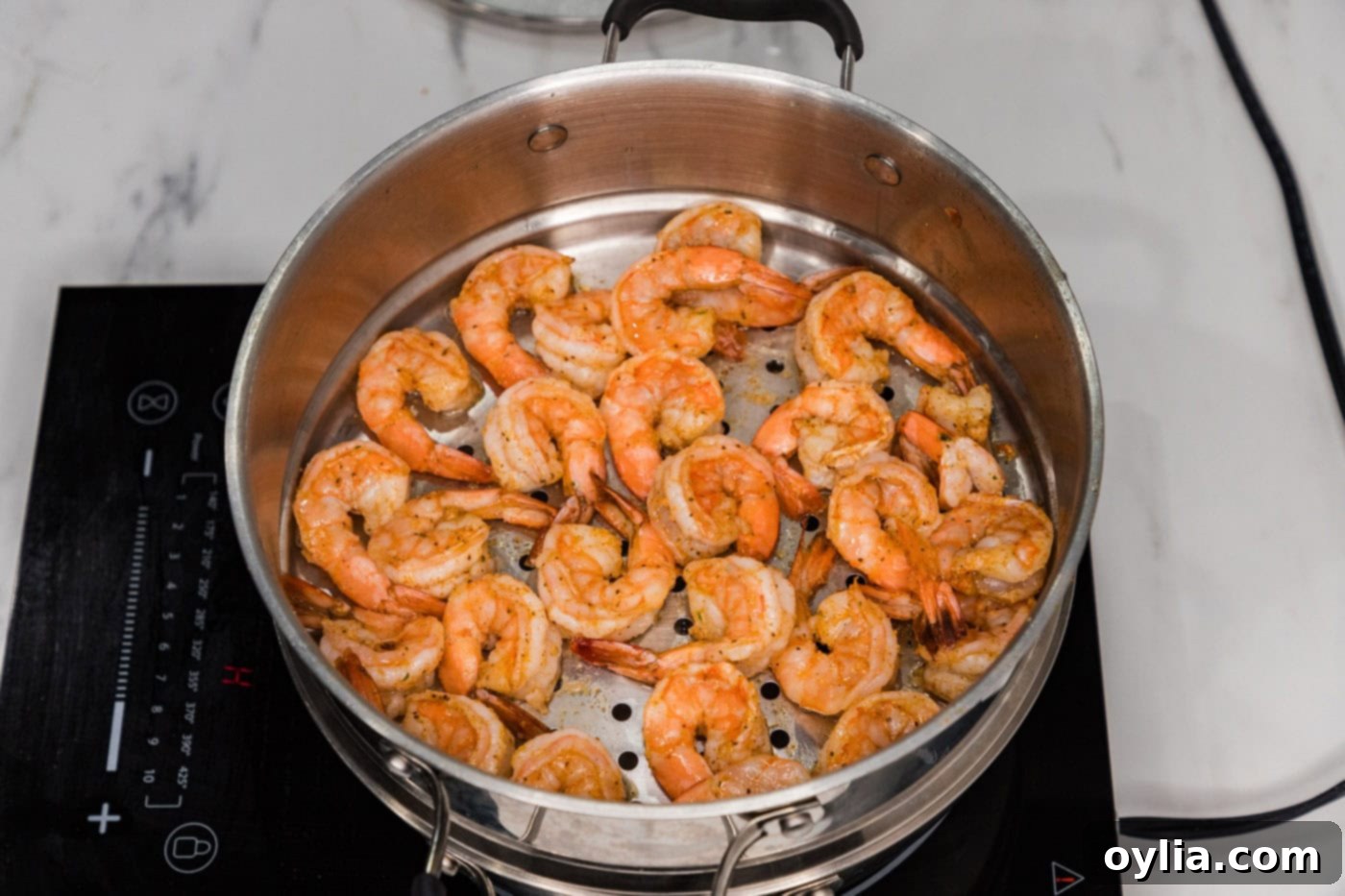Easy Steamed Shrimp Recipe with Old Bay: Tender & Flavorful in 10 Minutes
Discover the ultimate method for perfectly cooked, succulent shrimp every single time with this incredibly simple steamed shrimp recipe. Requiring just 4 core ingredients and a mere 10 minutes from start to finish, this technique guarantees tender, plump shrimp that are bursting with classic Old Bay flavor. Say goodbye to rubbery, overcooked seafood and hello to a foolproof way to enjoy one of the ocean’s most delicious offerings.
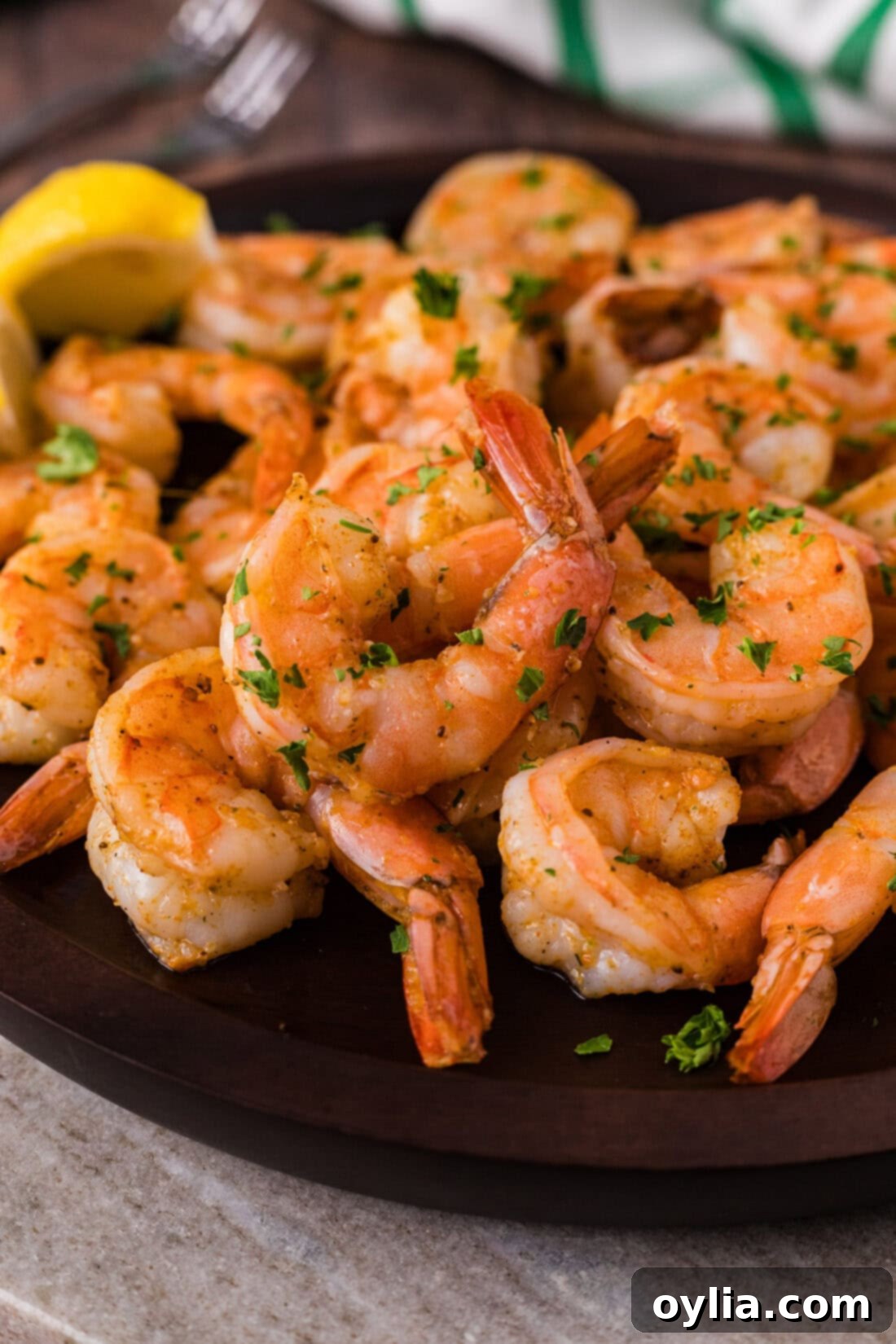
Why This Easy Steamed Shrimp Recipe is Your New Favorite
This steamed shrimp recipe is celebrated for its incredible ease, minimal preparation time, and consistently delicious results. When you’re in the mood for a light, flavorful meal or a quick appetizer but are short on time, this method is an absolute lifesaver. The magic lies in its simplicity: a little olive oil to help the seasonings adhere, a generous sprinkle of classic Old Bay seasoning, and a hint of garlic salt are all you need to perfectly complement the shrimp’s natural sweetness without overpowering it.
Steaming is a remarkably gentle cooking method, making it ideal for delicate seafood like shrimp. It ensures that each piece cooks evenly and helps to lock in moisture, resulting in that perfectly plump, juicy, and tender texture that can be difficult to achieve with other high-heat cooking techniques. Furthermore, unlike frying or sautéing, steaming requires very little added fat, making it a significantly healthier option for those looking to enjoy seafood while maintaining a balanced diet. As an added bonus, cleanup is often much simpler compared to messy frying pans or grilled surfaces.
While there are many excellent ways to prepare shrimp – from sautéed to baked and grilled – steaming offers a unique advantage. It truly allows the pure, delicate flavor of the shrimp to shine, with the subtle spices enhancing rather than masking it. This method is perfect for a quick weeknight dinner, a healthy and elegant appetizer, or as a foundational ingredient in a variety of other dishes. It’s a true testament to how simple, quality ingredients, when prepared correctly, can create an exceptional and satisfying culinary experience.
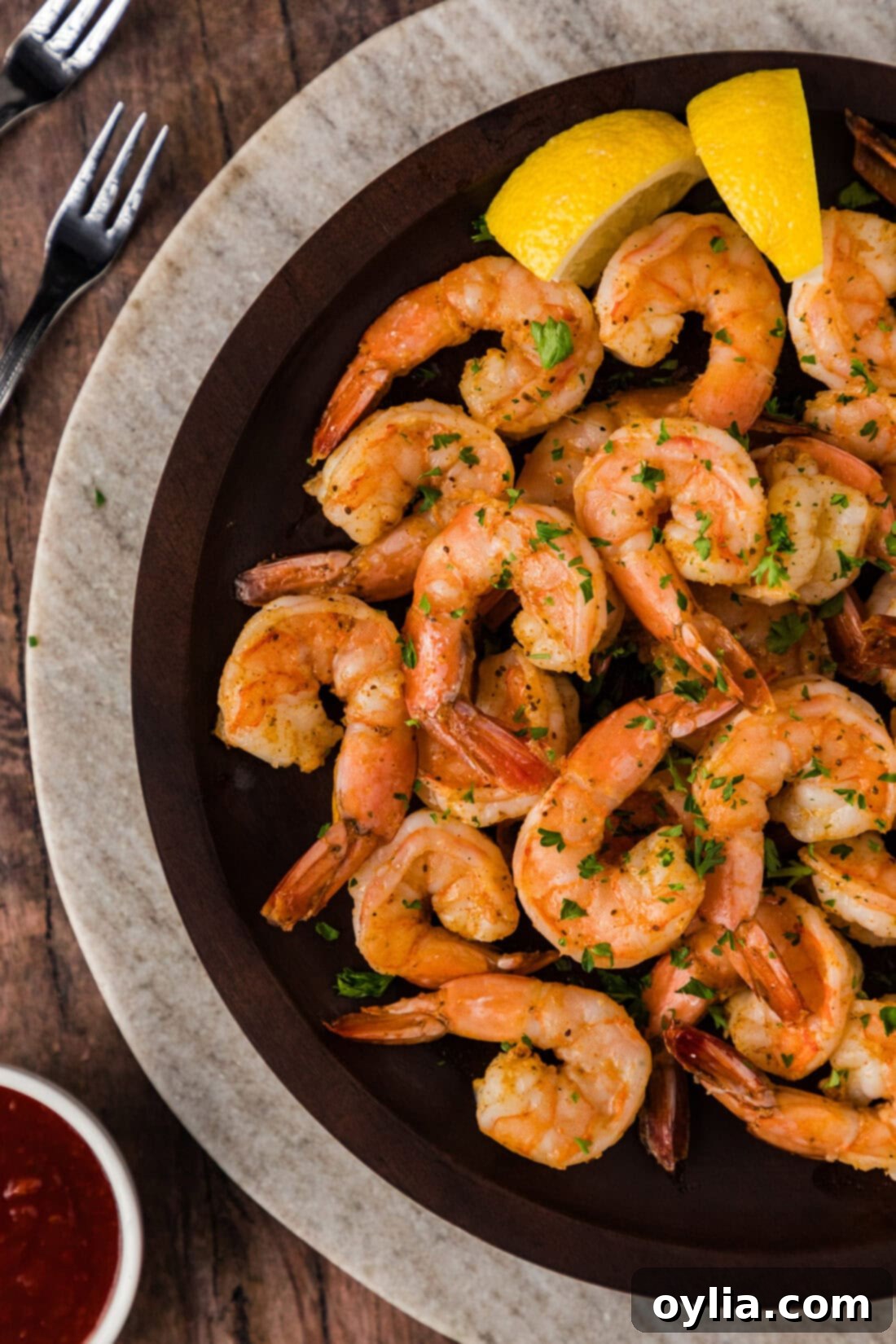
Essential Ingredients for Perfect Steamed Shrimp
This recipe relies on a simple yet effective combination of ingredients to deliver maximum flavor with minimal fuss. While you’ll find all precise measurements and detailed instructions in the printable recipe card at the very end of this post, here’s an in-depth look at each component and why it’s key to your success.
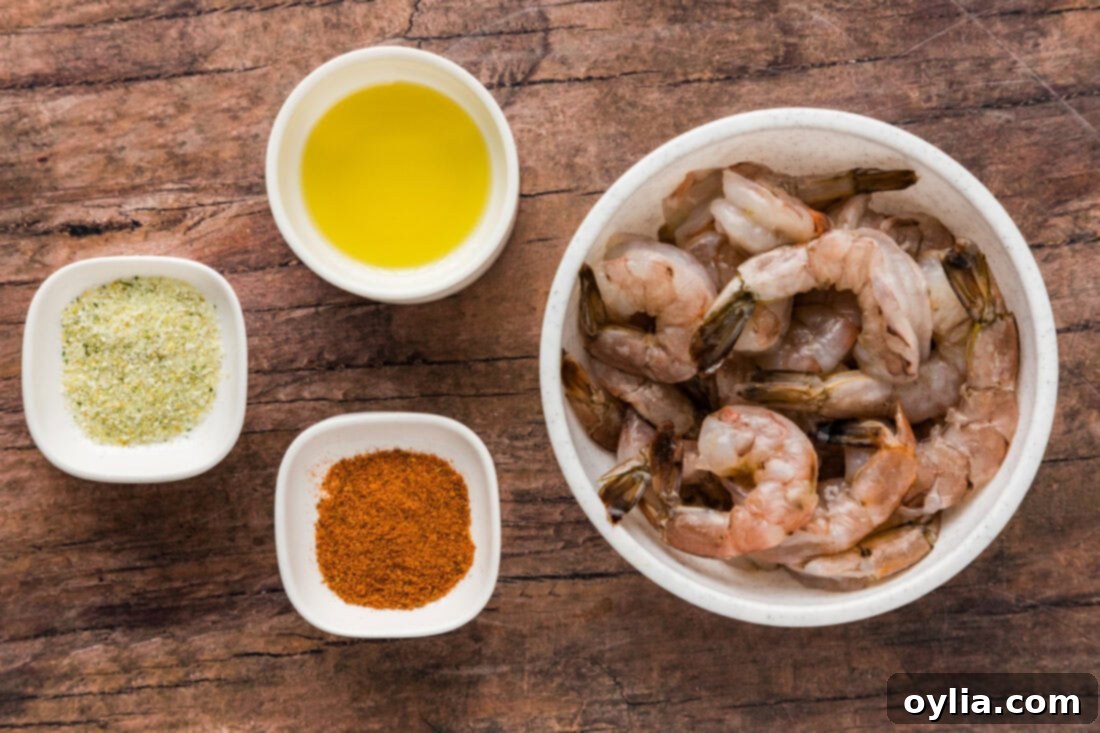
Ingredient Spotlight & Smart Substitution Suggestions
- SHRIMP: You will need one pound of large, raw shrimp for this recipe. It’s crucial that they are peeled and deveined before you start. This ensures the seasonings can adhere properly to the flesh and makes them ready for immediate enjoyment after cooking.
Fresh vs. Frozen: While fresh shrimp are always fantastic, high-quality frozen shrimp work equally well and are often more convenient. If using frozen, be sure to thaw them completely before seasoning. Thawing allows the shrimp to absorb the flavors more effectively; otherwise, the seasoning may wash off as the ice melts during steaming.
Size Matters: Look for shrimp labeled “large” (26-30 count per pound) or “jumbo” (21-25 count). These sizes tend to retain their plumpness and juicy texture best when steamed. Smaller shrimp cook much faster and can become rubbery if not watched carefully, while colossal shrimp may require a minute or two extra cooking time.
Preparation: If you purchase shell-on shrimp, carefully peel them by starting from the legs, then make a shallow incision along the back to remove the dark vein (the digestive tract). - SEASONING: The classic combination of Old Bay seasoning and garlic salt provides a perfectly balanced and iconic flavor profile that enhances the shrimp without overwhelming its delicate taste.
- Old Bay Seasoning: This beloved blend, featuring celery salt, paprika, red pepper, and other secret spices, is a cornerstone of seafood cuisine, especially on the East Coast. It delivers that quintessential, slightly spicy, and savory flavor.
- Garlic Salt: A blend of garlic powder and salt, garlic salt ensures even distribution of both key flavors. It’s more convenient than mixing separate garlic powder and salt.
Substitution Suggestions for Seasoning:
- For Old Bay: If you don’t have Old Bay, a Cajun or Creole spice blend can offer a similar flavor profile. Alternatively, you can create a simple mix with paprika, onion powder, a pinch of cayenne pepper, and black pepper.
- For Garlic Salt: You can substitute with 1 teaspoon of garlic powder and ½ to ¾ teaspoon of fine sea salt, adjusting to your taste preference.
- Additional Flavor Boosters: Feel free to customize! A squeeze of fresh lemon juice over the shrimp before or after steaming can brighten the flavors. A pinch of red pepper flakes will add a gentle kick, or a dash of smoked paprika can introduce a deeper, smoky note. For a homemade seasoning blend, explore our classic shrimp seasoning recipe.
- OLIVE OIL: A small amount of olive oil is essential here. It helps the granular seasonings adhere to the smooth surface of the shrimp, ensuring every bite is coated with delicious flavor. It also contributes to a slightly richer texture. If you prefer, any neutral oil like avocado oil or grapeseed oil can be used as a substitute.
- WATER (for steaming): While plain tap water works perfectly fine for generating steam, you can infuse subtle extra flavor by using alternatives in the base of your steamer pot. Consider vegetable broth, a dry white wine, or even a light beer. These aromatic liquids will gently perfume the shrimp as it cooks, adding another layer of complexity to the finished dish.
Step-by-Step Guide: How to Make Perfect Steamed Shrimp
These step-by-step photos and detailed instructions are provided to help you visualize each stage of making this recipe with complete confidence. For a printable version of this recipe, complete with precise measurements and condensed instructions, please Jump to Recipe at the bottom of this page.
- Season the Shrimp: Begin by placing the peeled and deveined raw shrimp in a medium-sized mixing bowl. Sprinkle the garlic salt and Old Bay seasoning evenly over the shrimp. Using your hands or a spatula, gently toss the shrimp to ensure every piece is thoroughly coated with the spices.
- Drizzle with Olive Oil: Next, drizzle the measured olive oil over the seasoned shrimp. Toss again gently until all the shrimp are evenly glistening with the oil and spices. This crucial step helps the flavors meld and stick to the shrimp during steaming.

- Set up Your Steamer: Pour approximately one inch of water (or your chosen aromatic liquid like broth or wine) into the bottom pot of your steam pot. Place this pot over medium-high heat and bring the liquid to a rapid, rolling boil. It’s important that the water level remains below the steamer basket, as the shrimp should cook from the steam, not be submerged in the boiling liquid.
- Load the Steamer Basket: Once your shrimp is fully seasoned, carefully arrange it in a single layer within the top basket of the steam pot. Avoid overcrowding the basket, as this can lead to uneven cooking. If you’re preparing a larger quantity of shrimp, it’s best to steam them in two separate batches.

- Begin Steaming: As soon as the water in the bottom pot is boiling vigorously, carefully place the steamer basket containing the shrimp onto the pot. Immediately cover the pot with a tight-fitting lid. This is essential to trap the steam effectively and ensure proper cooking.
- Cook to Perfection: Steam the shrimp for approximately 5-7 minutes. The precise cooking time will vary slightly depending on the size of your shrimp and the efficiency of your steamer setup. Shrimp are fully cooked when they turn an opaque pink color and curl into a loose ‘C’ shape. It’s vital to avoid overcooking, as this is the primary cause of rubbery shrimp. Remove them from the heat promptly once they reach this stage.

Frequently Asked Questions & Expert Tips for Steamed Shrimp
Yes, frozen shrimp are perfectly acceptable for this recipe and are often a very convenient choice. However, it is absolutely essential that you thaw the shrimp completely before you begin the seasoning process. Attempting to season frozen shrimp will prevent the olive oil and spices from adhering properly; instead, they will simply slide off with the melting ice as the shrimp steams, resulting in less flavorful seafood. To thaw frozen shrimp quickly and safely, place them in a sealed Ziploc bag and submerge the bag in a bowl of cool water. Your shrimp should be thawed in approximately 30-45 minutes, depending on the quantity. It’s a good practice to change out the water every 15 minutes or so to keep it consistently cool. Never thaw shrimp in warm or hot water, as this can prematurely start the cooking process, leading to an uneven and undesirable texture.
No need to worry! You can easily create a makeshift steamer using common kitchen items. Simply find a large pot that has a lid and is big enough to comfortably fit a heat-safe colander (metal is usually best) or a standard steamer basket insert. Pour about an inch of water into the bottom of the pot, then place the colander or basket inside, ensuring that its bottom does not touch the water. The goal is for the shrimp to cook from the rising steam, not by boiling in the water. Cover the pot tightly with its lid and proceed with the recipe as directed. If you plan to steam frequently, you might consider investing in individual steamer baskets that are designed to fit various pot sizes.
To ensure optimal freshness and preserve the delicious flavor, any leftover steamed shrimp should be stored in an airtight container. Promptly place the container in the refrigerator once the shrimp has cooled down to room temperature. When stored correctly, steamed shrimp will remain good for up to 3 days. They are fantastic served cold the next day in salads, wraps, or as a light snack.
Reheating shrimp can be a bit challenging, as it’s very easy to overcook it and end up with a rubbery texture. The key is to reheat it gently and slowly. We highly recommend avoiding the microwave if possible, as it tends to cook unevenly and can quickly zap moisture.
A fantastic method is to reheat on the stovetop: Place the shrimp in a skillet with a small splash of water or broth (about 1-2 tablespoons). Cover the skillet with a lid and cook over low to medium-low heat for just a few minutes, until the shrimp is warmed through. The steam generated from the small amount of liquid will gently rehydrate and warm the shrimp without overcooking it.
Alternatively, you can reheat steamed shrimp in the oven: Preheat your oven to a low temperature, typically around 275°F (135°C). Spread the shrimp in a single layer on a baking sheet, ideally with a small splash of water or broth, and cover it loosely with aluminum foil. Heat for approximately 8-10 minutes or until warmed through, checking frequently to prevent any overcooking.
Shrimp cooks incredibly fast, and recognizing when it’s perfectly done is crucial to prevent a rubbery outcome. Raw shrimp typically appears grey and translucent. As it cooks, it will transform into an opaque pink color and curl into a loose “C” shape. If your shrimp curls into a tight “O” shape, it’s a clear sign that it has been overcooked. Aim for that perfect, gentle “C” and a vibrant pink hue throughout. A general guideline is 5-7 minutes for large shrimp, but always monitor them closely as actual cooking times can vary based on the shrimp’s size and the efficiency of your steaming setup. When in doubt, it’s better to undercook slightly and check again than to overcook.
Absolutely! Infusing your steaming liquid with various aromatics is an excellent way to impart subtle layers of flavor to your shrimp. Beyond plain water, you could consider using dry white wine, a light beer, vegetable broth, or even chicken broth. For an aromatic boost, try adding lemon slices, smashed garlic cloves, sprigs of fresh herbs (such as parsley, dill, or thyme), a bay leaf, or a few whole peppercorns to the water. These additions will create a fragrant steam that delicately flavors the shrimp as it cooks, enhancing the overall sensory experience.
The most frequent culprit behind rubbery shrimp is overcooking. Shrimp protein contracts very rapidly when exposed to heat. Even just a minute too long in the steamer can transform tender, succulent shrimp into tough, chewy morsels. To avoid this, always keep a watchful eye on your shrimp as it steams. As soon as it turns opaque pink and forms that gentle ‘C’ shape, it’s done. Remove it immediately from the heat. Another less common cause could be starting with pre-cooked shrimp, which would only require a brief warming, not full cooking – this recipe is specifically designed for raw shrimp.
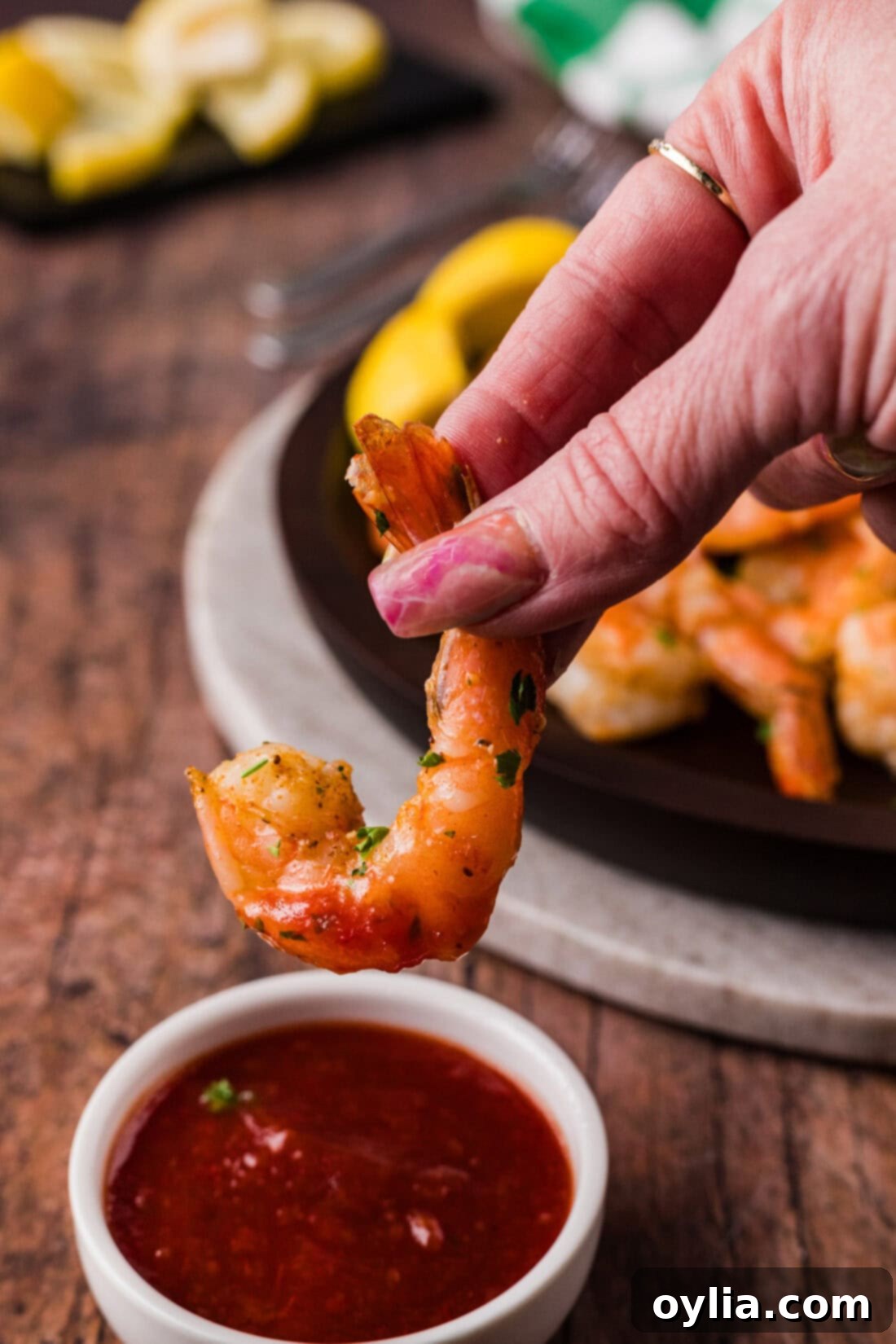
Delicious Serving Suggestions for Your Steamed Shrimp
Steamed shrimp are incredibly versatile and can be enjoyed in a myriad of ways, whether served hot right off the steamer or chilled. Their delicate flavor and tender texture make them a perfect canvas for a variety of accompaniments and allow them to seamlessly integrate into countless dishes.
Perfect Dipping Sauces: The classic pairing for steamed shrimp is, of course, a vibrant and zesty cocktail sauce. But don’t limit yourself! Other fantastic dipping options to consider include:
- Creamy Garlic Aioli for a rich, savory touch.
- Luxurious Drawn Butter or a fragrant Lemon Garlic Butter for a truly indulgent experience.
- Sweet and Spicy Asian Sweet Chili Sauce for an exciting flavor contrast.
- Tangy Tartar Sauce or a zesty Remoulade, perfect for a Southern twist.
- A simple squeeze of fresh lemon juice with a sprinkle of finely chopped fresh parsley for a clean, bright taste.
Main Dishes & Creative Meal Ideas:
- Serve your freshly steamed shrimp alongside a bed of fluffy white or brown rice, savory buttered noodles, or a creamy risotto for a complete and satisfying meal.
- Incorporate them into vibrant, leafy salads for a light yet filling lunch – they are particularly excellent in a Caesar salad, a fresh Cobb salad, or a simple green salad with a citrus vinaigrette.
- Wrap them in warm corn or flour tortillas with your favorite salsas, shredded cabbage, and a drizzle of crema for delectable shrimp burritos or tacos.
- Add them to pasta dishes like a light lemon-garlic shrimp scampi, a creamy alfredo, or a fresh pesto pasta for an extra protein boost.
- They make an excellent, lean protein addition to stir-fries, noodle bowls, or even homemade sushi rolls and spring rolls.
- Enjoy them as a healthy appetizer on their own, perhaps arranged beautifully on a platter with chilled dipping sauces for entertaining.
Steamed shrimp are also an ideal ingredient when a recipe specifically calls for already cooked shrimp, offering a clean, pure shrimp flavor that won’t compete with other ingredients.
Explore More Delicious Shrimp Recipes
If you have fallen in love with cooking shrimp as much as we have, then you’re in for a treat! Discover exciting new ways to prepare this incredibly versatile seafood with these additional fantastic recipes from our collection:
- Crispy Shrimp
- Butterfly Shrimp
- Blackened Shrimp
- Garlic Butter Shrimp
- Broiled Shrimp
I love to bake and cook and share my kitchen experience with all of you! Remembering to come back each day can be tough, that’s why I offer a convenient newsletter every time a new recipe posts. Simply subscribe and start receiving your free daily recipes!
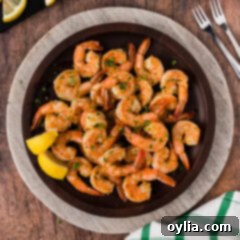
Steamed Shrimp
IMPORTANT – There are often Frequently Asked Questions within the blog post that you may find helpful. Simply scroll back up to read them!
Print It
Pin It
Rate It
Save ItSaved!
Course: Dinner
Cuisine: American
Ingredients
- 1 pound large raw shrimp peeled and deveined
- 2 teaspoons garlic salt
- 2 teaspoons Old Bay seasoning
- 1 Tablespoon olive oil
Things You’ll Need
-
Large mixing bowl
-
Steam pot
Before You Begin
- You can easily makeshift a steamer if you don’t already have one. To do so, place a heat-safe colander (such as metal) inside a pot large enough to fit with the lid on. You can also purchase individual steamer baskets to use with your existing pots.
- To thaw frozen shrimp quickly, place it in a sealed ziptop bag and submerge it in a bowl of cool water. Your shrimp should be thawed in about 40 minutes or so. Change out the water as needed. Never thaw shrimp in warm or hot water.
Instructions
-
Season shrimp with garlic salt and Old Bay.1 pound large raw shrimp, 2 teaspoons garlic salt, 2 teaspoons Old Bay seasoning
-
Drizzle with olive oil and toss with seasoned shrimp.1 Tablespoon olive oil
-
Add enough water to the bottom of the steam pot to come an inch or so up the sides. Bring to a boil over medium-high heat.
-
Place seasoned shrimp into the top basket of the steam pot.
-
Put basket in place over the boiling water and cover with lid.
-
Cook for 5-7 minutes.
Expert Tips & FAQs
- Store leftovers in an air-tight container kept in the refrigerator for up to 3 days.
- Reheat steamed shrimp in a skillet with a splash of water. Cover with a lid and cook for a few minutes until warmed through. You can also reheat it in an oven set to 275F for around 10 minutes or so. Reheating shrimp can be tricky, it’s best to do it low and slow instead of popping it into the microwave.
Nutrition
Tried this Recipe? Pin it for Later!Follow on Pinterest @AmandasCookin or tag #AmandasCookin!
The recipes on this blog are tested with a conventional gas oven and gas stovetop. It’s important to note that some ovens, especially as they age, can cook and bake inconsistently. Using an inexpensive oven thermometer can assure you that your oven is truly heating to the proper temperature. If you use a toaster oven or countertop oven, please keep in mind that they may not distribute heat the same as a conventional full sized oven and you may need to adjust your cooking/baking times. In the case of recipes made with a pressure cooker, air fryer, slow cooker, or other appliance, a link to the appliances we use is listed within each respective recipe. For baking recipes where measurements are given by weight, please note that results may not be the same if cups are used instead, and we can’t guarantee success with that method.
We sincerely hope this comprehensive guide inspires you to try your hand at steaming shrimp and discover just how easy, rewarding, and incredibly delicious it can be. Enjoy your perfectly cooked, flavorful steamed shrimp!
